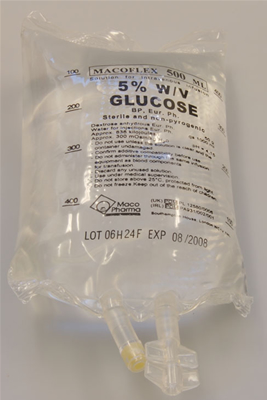Intracellular Compartment
Glucose-containing isotonic fluids distribute throughout the total body water.
Question: If a litre of 5% glucose is given, how much is found in:
- Plasma
- Interstitial fluid
- Intracellular fluid

Glucose-containing isotonic fluids distribute throughout the total body water.
Question: If a litre of 5% glucose is given, how much is found in:
- Plasma
- Interstitial fluid
- Intracellular fluid
Answer: The distribution is in the same ratio as for the volumes of these three compartments. Plasma: interstitial fluid volume ratio is 1:3 and extracellular: intracellular fluid volume ratio is 1:2.
Thus, 333 ml is in the ECF and 667 ml is in the ICF. Of the 333 ml in the ECF, 83 ml is in the plasma and 250 ml in the interstitial fluid.
Question: Are these fluids appropriate for use intraoperatively during elective surgery?

Glucose-containing isotonic fluids distribute throughout the total body water.
Question: If a litre of 5% glucose is given, how much is found in:
- Plasma
- Interstitial fluid
- Intracellular fluid
Answer: The distribution is in the same ratio as for the volumes of these three compartments. Plasma: interstitial fluid volume ratio is 1:3 and extracellular: intracellular fluid volume ratio is 1:2.
Thus, 333 ml is in the ECF and 667 ml is in the ICF. Of the 333 ml in the ECF, 83 ml is in the plasma and 250 ml in the interstitial fluid.
Question: Are these fluids appropriate for use intraoperatively during elective surgery?
Answer: No. The patient would not be significantly dehydrated. Fluid losses during surgery are mainly from haemorrhage, together with evaporation from skin and exposed tissue. There is no intracellular fluid depletion. Only 1/12 of the volume of 5% glucose given stays intravascular. Hartmann's solution or 0.9% NaCl are more appropriate.
